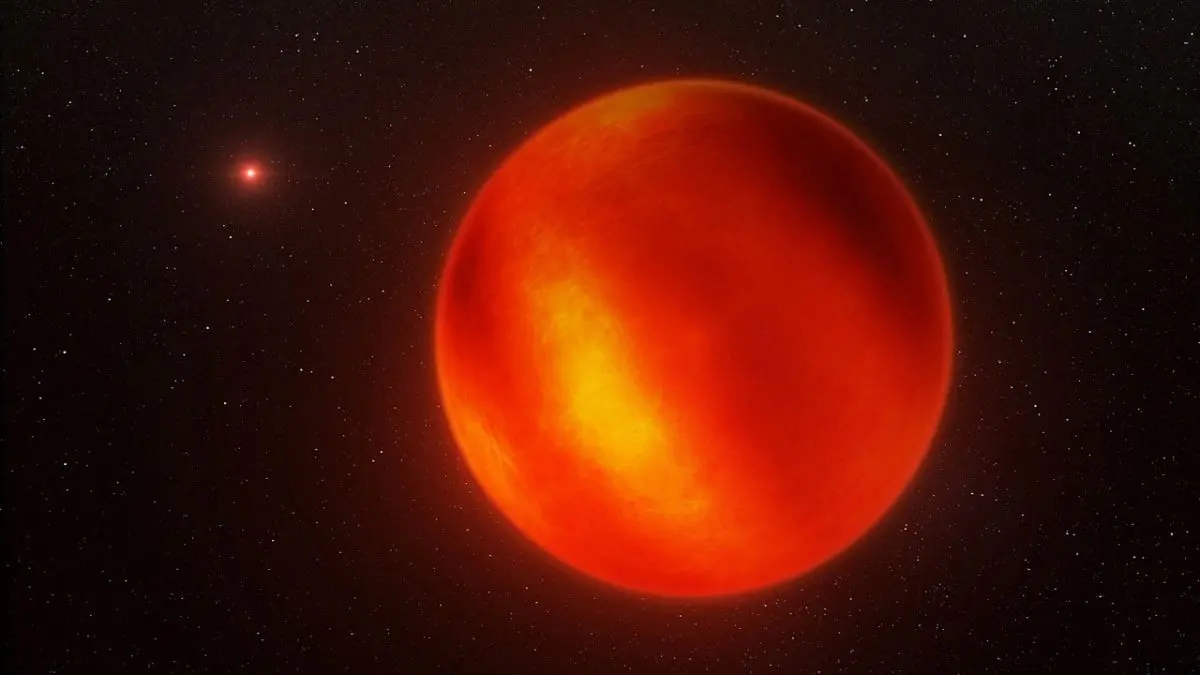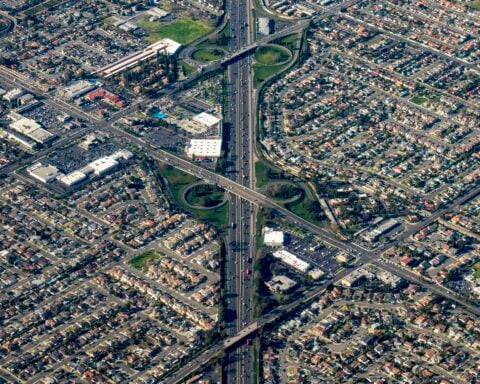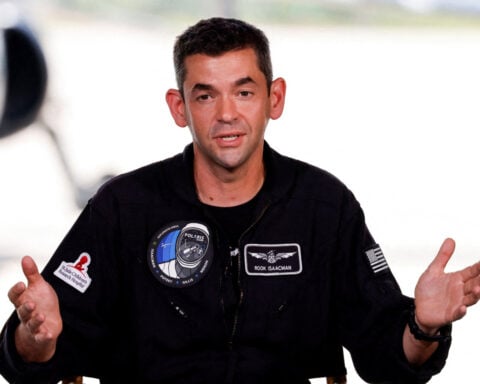By Will Dunham
WASHINGTON (Reuters) - The weather report is in for the two brown dwarfs - celestial bodies bigger than a planet but smaller than a star - closest to us. It is inclement, to put it mildly: blazingly hot, with a toxic chemical cocktail swirling in the atmosphere and clouds of silicate particles blowing around like a Saharan dust storm.
Researchers have used James Webb Space Telescope observations to conduct detailed examinations of the atmospheric conditions on brown dwarfs, specifically a pair that orbit each other around six light years from Earth, quite close by cosmic standards. A light-year is the distance light travels in a year, 5.9 trillion miles (9.5 trillion km).
The Webb data provided a three-dimensional look at how the weather changed over the course of a brown dwarf's rotation - the larger of the two taking seven hours and the smaller five hours - with multiple layers of clouds found at different atmospheric depths.
Both have atmospheres dominated by hydrogen and helium, with trace amounts of water vapor, methane and carbon monoxide. The temperature at their cloud tops was about 1,700 degrees Fahrenheit (925 degrees Celsius), similar to a candle flame.
"In this study, we created the most detailed 'weather maps' for any brown dwarf to date," said astronomer Beth Biller of the University of Edinburgh's Institute for Astronomy, lead author of the study published on Monday in the scientific journal Monthly Notices of the Royal Astronomical Society.
Brown dwarfs are neither a star nor a planet, but something in between. They give off their own light thanks to their sheer heat - "just like you would see embers in a fire glowing red because of how hot they are," Biller said. It was that light that the researchers observed with Webb. Unlike stars, brown dwarfs do not have nuclear fusion occurring at their core.
"Like planets, but unlike stars, brown dwarfs can also have clouds made out of precipitates in their atmospheres. However, while we have water clouds on Earth, the clouds on brown dwarfs are much hotter and likely made up of hot silicate particles -kind of like a very hot Saharan dust storm," Biller said.
The current scientific thinking is that brown dwarfs form from large clouds of gas and dust like stars do, but fall short of mass sufficient to ignite nuclear fusion. Their composition is similar to gas giant planets like Jupiter, our solar system's largest planet. Their mass is up to 80 times greater than Jupiter's. By comparison, the sun's mass is about 1,000 times greater than Jupiter's.
The two brown dwarfs examined by Webb formed about 500 million years ago. Each has a diameter comparable to Jupiter's. One is 35 times more massive than Jupiter, and the other 30 times.
Webb discerned how their light varied as different atmospheric features rotated in and out of view.
"The fast rotation of both objects helps to drive their weather patterns, and if you could actually directly see the cloud-top structure, you probably would be able to see bands and vortices, like the Great Red Spot, as you do on Jupiter," Biller said.
"In the future, similar techniques could be used to study weather on potentially habitable exoplanets," Biller added, referring to planets beyond our solar system.
Brown dwarfs are relatively common. About 1,000 are known, compared to more than 5,000 known exoplanets.
Webb examines the cosmos mainly in the infrared, while its Hubble Space Telescope predecessor does so primarily at optical and ultraviolet wavelengths.
"The atmospheres of brown dwarfs are highly complex. Webb provides a huge leap forward in our ability to understand these atmospheres by providing unprecedented wavelength range and sensitivity," said astronomer and study co-author Johanna Vos of Trinity College Dublin in Ireland.
"These different wavelengths allow us to monitor the atmosphere from very deep to very shallow, giving a comprehensive look at the full extent of the atmosphere," Vos added.
(Reporting by Will Dunham, Editing by Rosalba O'Brien)

 Trump has begun another trade war. Here's a timeline of how we got here
Trump has begun another trade war. Here's a timeline of how we got here
 Canada's leader laments lost friendship with US in town that sheltered stranded Americans after 9/11
Canada's leader laments lost friendship with US in town that sheltered stranded Americans after 9/11
 Chinese EV giant BYD's fourth-quarter profit leaps 73%
Chinese EV giant BYD's fourth-quarter profit leaps 73%
 You're an American in another land? Prepare to talk about the why and how of Trump 2.0
You're an American in another land? Prepare to talk about the why and how of Trump 2.0
 Chalk talk: Star power, top teams and No. 5 seeds headline the women's March Madness Sweet 16
Chalk talk: Star power, top teams and No. 5 seeds headline the women's March Madness Sweet 16
 Purdue returns to Sweet 16 with 76-62 win over McNeese in March Madness
Purdue returns to Sweet 16 with 76-62 win over McNeese in March Madness








